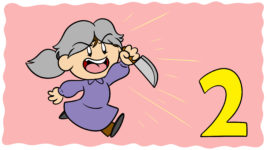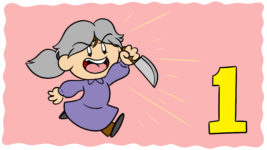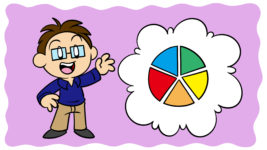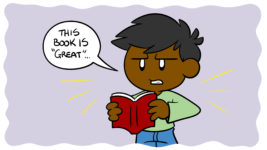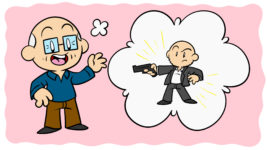Ever finish a story and walk around with it in your head for the rest of the month? Want that to be your reader’s experience of your story? A confusing ending, done well, might be the hook you need to keep readers thinking about, talking about, and wanting to read your book all over again.
An ending gives a book its legacy. Life of Pi is a compelling story, but without the ambiguous ending, it’s a read-once-and-return-to-library kind of book. Instead, the conclusion of this philoso-adventure story compels readers to flip back to the beginning and start again as soon as they pick their jaws up off the floor. The next time someone needs a book recommendation, Life of Pi is sure to come up. Read on to discover how a confusing ending can be so impactful and whether a lack of closure could be what your story needs.
Why confusing endings are compelling
As the culmination to an already well-crafted story, a confusing ending elicits a response that, translated into plain English, goes something like this: ‘Wait… what? No! Gah! Really? Hold on… did he? Did I miss…? OHHHHHH I get it – oh, no, wait. Oh. My. Gosh. Where was that page where she ____? Agh, it’s too good!’ (Flips back to page one and starts over.)
Back to Life of Pi for a moment: a simple adventure story. An exotic setting. A young boy. Survival. This isn’t a mystery or thriller, so why does the confusing ending work? Though the book itself isn’t a mystery, much of what it covers is. God is mysterious. Religions never agree, except in Pi’s extraordinary construal. Survival and trauma make the human brain do some very strange things. Psychosis can make the real seem unreal and vice versa. The themes the book deals with are not only universal but universally ambiguous.
Imagine the book without the ending, without the beginning. It is merely an adventure/survival story. The setting and characters are inherently interesting. But the protagonist is uniquely positioned in a world where religions meet at the crossroads. Where God is an ongoing question. Where animals symbolize deeper truths. Add the beginning back in. Now, the novel feels real; it begins with an interview. Add the ending back in. Now, the novel is more than a story, it is a commentary on philosophy and human psychology. It is an exploration of the meaning of faith and stories in human survival and well-being. This is why the ending works so well: it enriches and fulfills the inherent mystery already present in the book’s themes.
But perhaps Life of Pi’s greatest achievement is in helping us realize two incredibly satisfying things: first, those of us who want to believe one story or the other can. If what we crave is resolution, we receive it. Second, those of us who don’t want to know which story is ‘true’ never have to decide.
When a book wraps itself up neatly, it’s easy enough to set it aside in our minds. At first, with the really good ones, we’re sad that it’s over. We want to dwell in that world a bit longer. But, soon enough, reality sets back in or we pick up a new book, and Alas, Babylon slides into its place on our bookshelves and in our minds. But with Life of Pi, Killers of the Flower Moon, The Crimson Petal and the White, their gloriously open-ended endings mean the books will remain propped open upside-down on the arms of our couches, metaphorically speaking, basically forever. Even if it’s decades before we re-read them, or we never do at all, our minds never tire of asking what really happened, and – as internet forums will testify – we will talk about them till the cows come home.
This doesn’t just offer your readers a different type of enjoyment, but sometimes a more engaging experience overall. There’s a reason Twin Peaks has retained an audience that pretty much no other mystery series can boast; it never answered a question without posing two more.
Finally, there is something nice about not knowing, something reminiscent of childhood: it’s the magic trick that befuddles us. As much as we want to know how the trick was done, we really don’t. We want to be fooled and delighted all over again. This is why we so relish the indistinct nature of Calvin’s friend Hobbes and will probably cease to be friends with anyone who honestly believes he is ‘just’ a stuffed animal.
Fiction – comic strips and graphic novels included – is delightful precisely because it allows us to enjoy the impossible, to be caught up in the magic of a created world. Sometimes, that world begets resolution and we feel the relief of coming to a halt at the end of a roller coaster, legs still shaky, smiles and heaving sighs of relief all around. At other times, resolution would kill the magic, as in Calvin and Hobbes or Life of Pi. To resolve or not to resolve: that is the question we’ll tackle in the next section.
When a confusing ending works and when it doesn’t
A confusing ending won’t save a mediocre book. Readers who get to the end of Infinite Jest and start over aren’t doing so despite terrible prose. The book is well written, and even if all its threads were tied neatly into a bow by the end, it would still be a good read.
No, a confusing ending can’t save a bad book; it can only enhance a great one. Even then, the ending probably needs to be integral to the structure of the book in question. A confusing ending will irk readers if they feel it’s incongruent with the style or was tacked on for effect, and it definitely won’t work if it is rushed or (unintentionally) unclear.
So, provided you’ve written a zinger of a story, given yourself plenty of time to conclude it well, and are clear on every direction the plot and character arcs could take, you may well have a solid platform into which you can throw a wrench (or jackhammer) of an ending, upending reader expectations and leaving them back-thumbing through several chapters to try and grasp what really happened.
How do you know, though, if a confusing ending is right for your book? Sometimes, it’s easy to tell. It almost goes without saying that anything as trippy as Handler’s A Series of Unfortunate Events can get away with blurry lines and blurry endings. If your writing resembles Handler’s or Kafka’s, a lack of resolution is likely what your story needs.
Certainly, there are some genres which more overtly lend themselves to ambiguous non-conclusions: dark humor, mystery, horror, thriller, and crime being the most obvious candidates. Twelve Angry Men sets a perfect stage for ambiguity. In the real world, a person’s guilt can be nearly impossible to determine beyond reasonable doubt, and so writer Reginald Rose allows the jury – and the reader – to suffer the anxiety of never being able to know for sure.
We feel this same anxiety in Doubt: A Parable or the first season of the recent podcast Serial, in addition to countless other unsolved or unsolvable mysteries in the worlds of fiction and true crime alike.
A well-written but ambiguous horror ending can have full-blown adults burrowing under sheets at night, as in American Psycho, or wincing in anticipation of humanity’s inevitable demise, as in The Stand.
The ease with which these genres pull off perplexing last chapters gives us a clue as to what other types of stories might be able to follow suit: crime, mystery, and thriller themes are confusing in real life. Given our real life experiences with these themes, the books that embrace them practically beg to end with a flair of ambiguity. It stands to reason, then, that any topic which is confusing in real life may be appropriately concluded by not being concluded.
Love, psychology, psychosis, dementia, philosophy, religion, God, death, disease, murder, trauma, obsession, family feuds, the supernatural, secrets, affairs, big business, medicine, guilt, mistakes, good intentions, human trafficking, sex, money, the occult, and reincarnation – all of these have layers upon layers of meaning and thus they are rife with potential for authentic confusion.
The novel Elizabeth Is Missing twists two traditional themes (aging and missing-person mystery) into a unique narrative by giving its protagonist dementia: a real-life circumstance that begets confusion. The resulting unreliable narrative sets up the possibility for confusion throughout, though I won’t spoil the ending. The Giver ends with a sense of uncertainty that nevertheless presages hope. The Handmaid’s Tale leaves the reader before a bewildering fork in the road in a classic post-apocalyptic choose-your-own-ending invitation to the human race. Consider, too, the realist elements at work in Thomas Pynchon’s The Crying of Lot 49: dishonesty, conspiracy, hallucination. When people experience these things in real life, resolution is rare. Consequently, resolution in fiction can feel false.
Making it work
To decide if a confusing ending is what your story needs, explore its themes and how well they are typically resolved in real life. Ask how you’d like your reader to feel when they put your book down.
If there’s room for confusion in your book, you have two completely opposite and completely valid options: leave it open-ended and drive everybody nuts or wrap it up and have readers asking, ‘Why didn’t I see that?’
If you have an effective twist or particularly satisfying conclusion, it’s totally okay to end that way, but if you’re struggling with the ending, maybe that’s a sign you need to sever the story early. Joan Lindsay’s Picnic at Hanging Rock stops just shy of resolution, with a resulting cliffhanger that makes the book irresistible. Let your readers decide, or struggle to decide, what happens in the end. And if your book deals with some of life’s unanswerable questions, don’t try to answer them or even necessarily point out the fact that they are unanswerable. Leave them as ellipses and question marks, as ongoing investigations or captivating sleights of hand.
I’ve barely scratched the surface in referencing book endings that successfully confound readers. What are some of your favorites? What makes them so compelling? Let me know in the comments, and check out The Secret Art Of Writing A Surprising Plot Twist and Scared Of The Anticlimactic Ending? Here’s How To Kick It To The Curb for more great advice on compelling (if not complete) endings.

